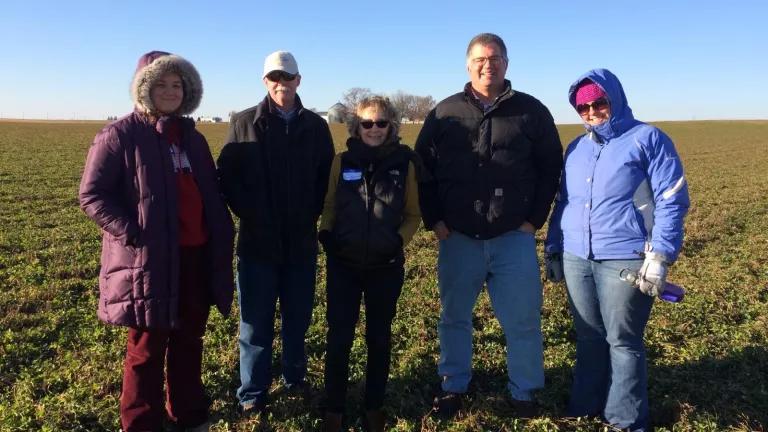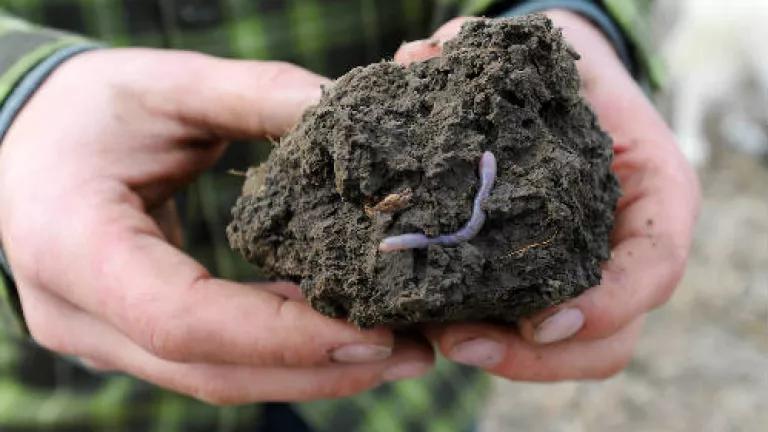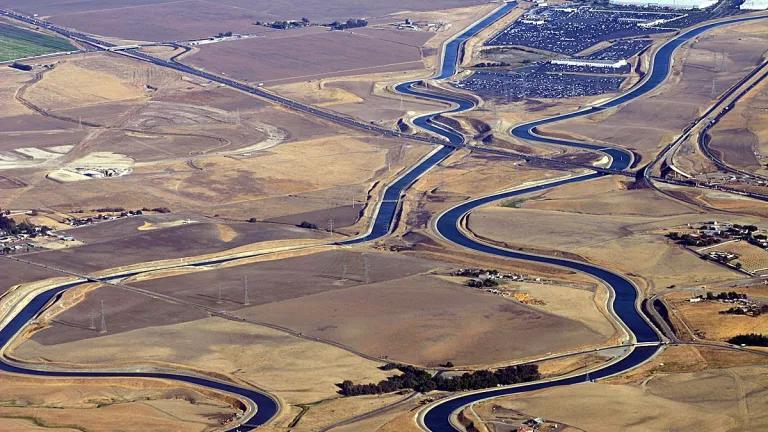Guest Blog: Iowa’s “Good Farmer Discount” First-Year Success

What’s new in Iowa this spring? Another 2,000-plus acres of cover crops greening up on corn and soybean fields, thanks to Iowa’s first-in-the-nation Cover Crop – Crop Insurance Demonstration Pilot Program. Launched last fall, the program offered landowners a new type of conservation incentive – a small “good farmer” discount through crop insurance for cover crop acres that were not already being cost-shared.
The incentive had strong interest from farmers, and the program’s original goal of gaining 200,000 new cover crop acres was likely exceeded. The final signup is still being verified by the Iowa Department of Agriculture and Land Stewardship (IDALS), administering the program in cooperation with the federal Risk Management Agency. The incentive comes from the state, which pledged $1 million for each of three years as part of efforts to implement the Iowa Nutrient Reduction Strategy.
NRDC worked closely with our partners in Iowa to support the pilot program, and it looks like the first year will be a success. Today, we will hear why this is important from three Iowans: Ann Robinson, for Iowa Environmental Council; Sarah Carlson, Practical Farmers of Iowa; and Aaron Lehman, Iowa Farmers Union.
Why Cover Crops Are Important - Sarah Carlson, Strategic Initiatives Director, Practical Farmers of Iowa
Cover crops are plants such as small grains, cereal rye or oats, and some brassicas (like turnips) planted between crop seasons to keep “living roots” on the land through the fall, winter and spring when runoff and leaching is most likely to occur. Numerous studies show cover crops build organic matter to hold nutrients in a stable organic form that is plant available, and allow soils to infiltrate, and hold, more water. They can reduce significantly nutrient delivery to waterways and the tile drains so common in Iowa. In our current cropping systems, a cover crop is often our best opportunity to achieve conservation goals.
Farmers are interested in cover crops for various reasons, especially to build long-term soil health. I’ve been involved with a couple of recent studies that analyzed cover crop economics, and though the findings were not as favorable as we had hoped, we found that cover crops can have positive returns - especially if a farm has livestock that can make use of the cover crops for forage.
In some scenarios, especially in the soybean year of their rotation, farmers are seeing returns on their investment in cover crops through improved weed control. The common wisdom is that if practiced regularly for a few years, cover crops can pay for themselves by reducing weed pressure. But this only helps the bottom line if farmers take the credit in their herbicide plans, and they don’t always.
Incentives are important to encourage more farmers to try cover crops, especially for farmers who may not expect to see the benefits if they don’t own the land or have a long-term lease.
A New Way to Encourage Stewardship - Ann Robinson, IEC Agriculture Policy Director
I’ve been excited to be involved in this positive, on-the-ground way to encourage stewardship and gain multiple benefits for our limited conservation funding. Thanks to the boost from the new incentive program, we may have about 750,000 acres cover crops in the state. That’s progress, but only a fraction of what is needed to meet Iowa’s water quality goals. We need reasons to keep the momentum up since we’ve likely already reached most of the early adopters.
When several of us met with legislators recently to share information about the program, we heard widespread support. Officials appreciated the good deal it represents at just $5/acre, compared to much higher federal and state cost-share incentives, depending on the cover crop mix and how long the landowner has used the practice. The crop insurance discount is small in comparison, but not all farmers want to participate in cost share. Others have “graduated” out of cost-share, yet might stay on track with cover crops if they get at least a small payment to help cover the costs.
Incentives Make a Difference - Aaron Lehman, Iowa Farmers Union President and Century Farm Owner/Operator
Cover crops are a cornerstone of building soil health, which many of us are really taking to heart, especially if we want to pass our land down to future generations -- or just take care of it as an investment.
Even so, cover crops might add to costs in the short-term and might require equipment not always on hand. They mean more decision-making and, in some cases, a conversation with our crop insurance agent or bank loan officer.
Incentives make a difference, especially in times like this when crop prices are low. They not only help the bottom line, they signal that the public is willing to help support something that’s going to benefit them.
One of my roles in this project has been to promote the pilot program to crop insurance agents in Iowa, and I’m pleased to say that there has been strong interest. Every Approved Insurance Provider in Iowa has opted to participate. It is important that we are doing this in coordination with the Risk Management Agency and the crop insurance agents they work with. They are extremely valuable partners to a farmer. Ultimately, having these conversations about soil health and cover crops will lead to improvements on our farm, like resiliency, reduced risks and fewer payouts for crop losses.
Ideally, we will see improved policies in federal policy that better recognize the value of cover crops and other conservation practices.
For more on the Iowa Cover Crop – Crop Insurance Demonstration Project, see https://www.cleanwateriowa.org/covercropdemo-main/



